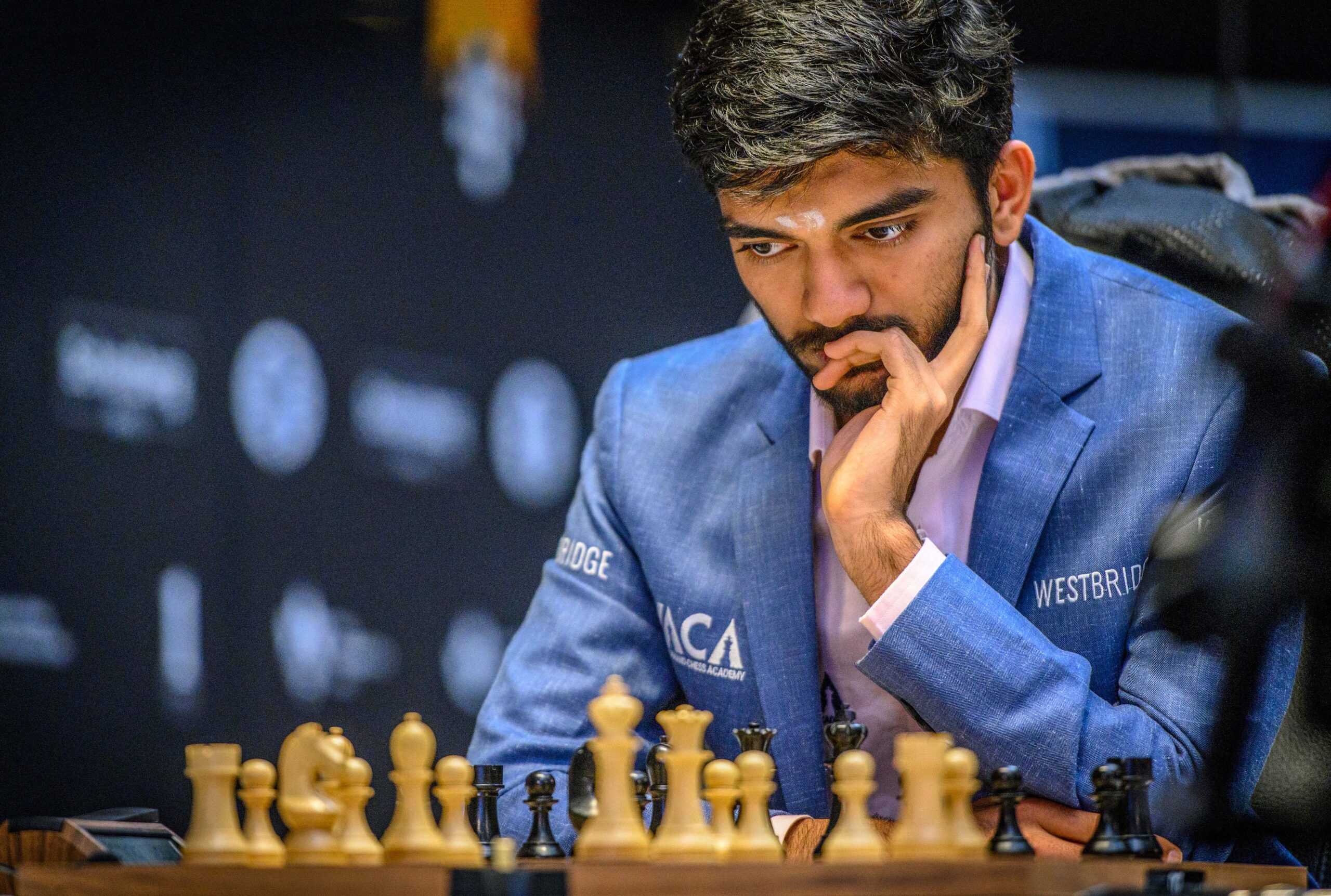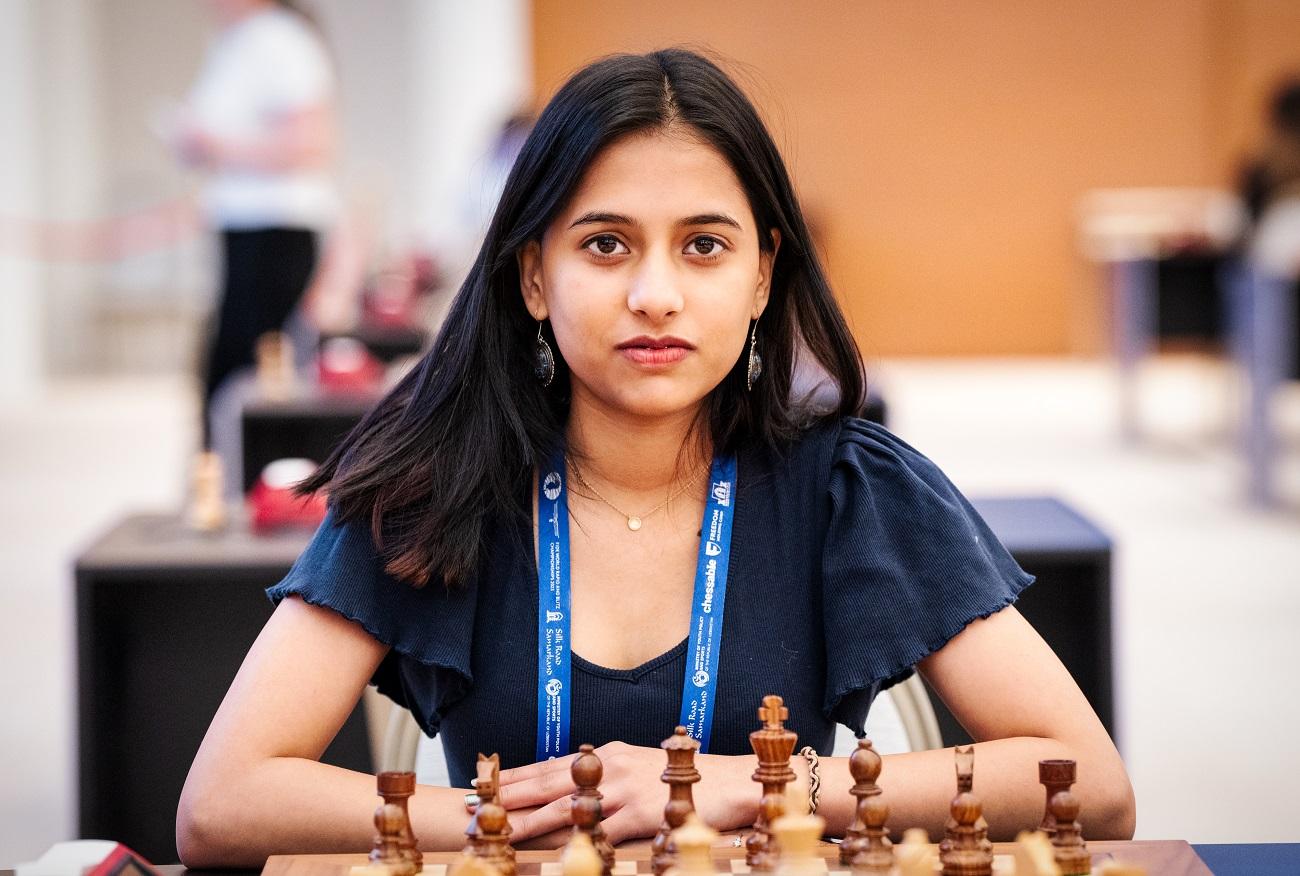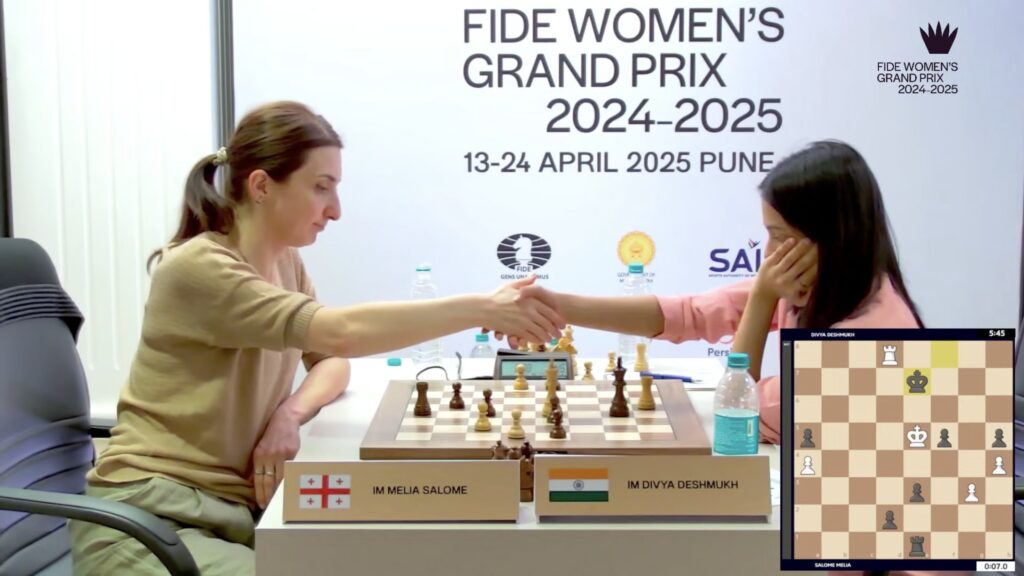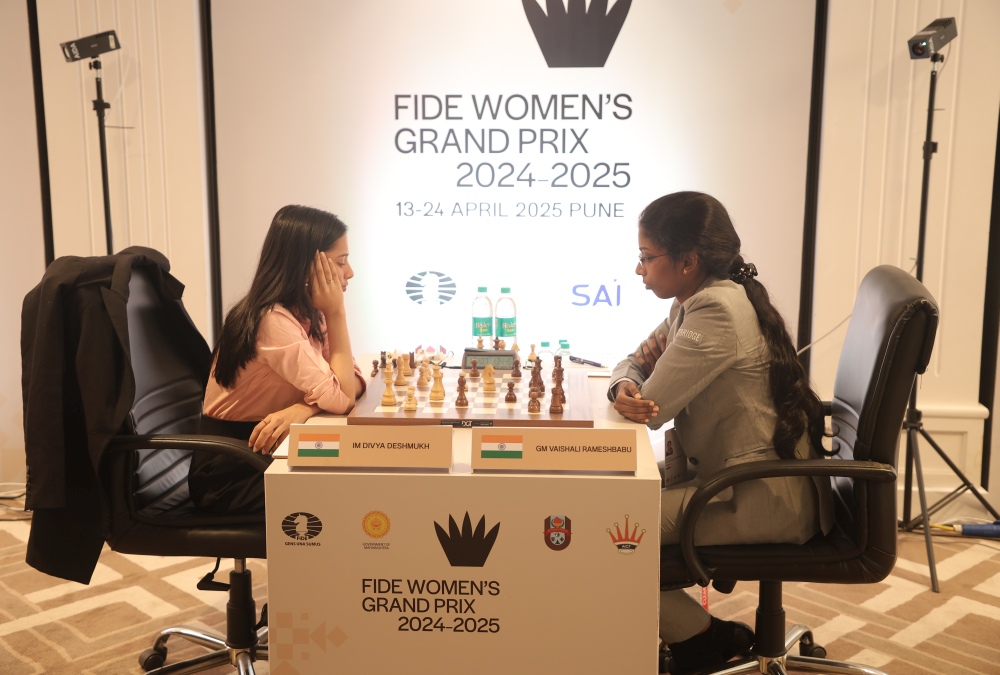Gukesh’s Stellar Performance: Back-to-Back Wins in Paris Freestyle Rapid

Introduction to the Paris Freestyle Rapid
The Paris Freestyle Rapid tournament is a prestigious event in the chess calendar, drawing attention from players and enthusiasts worldwide. This tournament holds significant importance as it showcases rapid-format chess, where each player has limited time to make their moves, resulting in an exhilarating and dynamic competition. The rapid format not only tests the players’ strategic skills and knowledge but also their ability to think quickly and adapt under pressure.
Held in the vibrant city of Paris, this tournament attracts top-tier talent from across the globe, creating a thrilling atmosphere filled with excitement and anticipation. The blend of a lively audience and intense matches contributes to a unique ambiance that elevates the experience for both participants and spectators alike. The venue, often strategically selected for its historic significance and accessibility, adds to the overall charm of the event, further highlighting chess as not only a game of intellect but also a cultural phenomenon.
During this tournament, players engage in numerous rounds, competing against opponents of various skill levels. The rapid time controls – typically involving 15 minutes per player with a possible increment – challenge the competitors to balance the execution of deep strategic plans against the urgency of swift decision-making. These factors combine to make the Paris Freestyle Rapid not just a competition of skill, but a captivating spectacle, where every move can yield significant consequences.
It is within this electrifying framework that Gukesh displayed an exceptional performance during the tournament, achieving back-to-back wins that elevated his status in the chess world. His outstanding accomplishments serve as a testament not only to his talent but also to the rigorous nature of chess tournaments like the Paris Freestyle Rapid.
Gukesh’s Journey to Victory: A Brief Background
Gukesh D is an emerging star in the world of chess, known for his impressive ability to navigate complex positions and outmaneuver seasoned opponents. Born in 2006 in Chennai, India, Gukesh is often lauded for his exceptional talent and dedication to the game. His journey began at a young age when he started playing chess with his mother, developing a passion that would lead him to become one of the youngest Grandmasters in history. Achieving this title at just 12 years and 7 months, Gukesh quickly established himself as a formidable force within the chess community.
His rise in the chess rankings can be attributed to a combination of rigorous training and participation in international competitions. Gukesh has participated in numerous tournaments, consistently showcasing his capabilities against higher-ranked players. Notably, he has clinched victories in prestigious events such as the World Youth Chess Championship and various Grandmaster tournaments, further solidifying his reputation. Through hard work, Gukesh has steadily increased his Elo rating, making him one of the top players in India and globally recognized among prodigious talents.
What sets Gukesh apart is not merely his technical skills but also his strategic mind. His training regimen emphasizes both tactical drills and psychological preparation. Working closely with his coaches, he addresses different aspects of the game, focusing on endgame strategies and opening preparations that can be pivotal during competitions. Gukesh’s performance in the chess circuit has made him an intimidating opponent, capable of handling pressure and performing extraordinarily even in crucial moments, as evidenced by his recent victories in the Paris Freestyle Rapid tournament. His commitment to excellence forebodes exciting developments in his evolving chess career.

Round 8: Gukesh vs. Keymer – A Recap
In the pivotal eighth round of the Paris Freestyle Rapid event, Gukesh faced off against German prodigy Vincent Keymer. This highly anticipated clash highlighted Gukesh’s strategic prowess and ability to leverage his position effectively, culminating in a well-deserved victory. Playing with the white pieces, Gukesh opened the game with the Sicilian Defense, a choice that immediately set the tone for a dynamic encounter.
As the game progressed, Gukesh made several notable moves that illustrated his deep understanding of chess. Utilizing the Sicilian Defense, he aimed to create imbalanced positions, which could offer him tactical chances. One of the critical moments arose in the middle game when Gukesh executed a knight maneuver that not only centralized his control but also threatened Keymer’s queen. This pivotal move forced Keymer to make defensive adjustments, ultimately leading to a significant initiative for Gukesh.
The endgame showcased Gukesh’s exceptional technique. As pieces traded off, it became clear that Gukesh was not only playing offensively but also reinforcing his king’s safety. A decisive moment emerged when Gukesh transitioned into a favorable endgame with a material advantage, effectively turning the match in his favor. Keymer, although displaying resilience throughout, found it increasingly difficult to counter Gukesh’s tactical threats and positional dominance.
By the time the endgame approached, Gukesh’s grasp on the board was evident as he executed a series of precise moves that cornered Keymer’s king. Ultimately, Gukesh’s ability to manage the complexities of the game, coupled with strategic foresight, propelled him to victory in this round. His performance in this match further underscored his talent and determination, positioning him strongly in the tournament standings.
Key Moves and Strategies Utilized
During his recent match against Keymer in the Paris Freestyle Rapid tournament, Gukesh displayed a commanding understanding of chess that was evident through his well-calibrated strategies. One of the most crucial elements of his success was his mastery of opening theory. Gukesh employed the Sicilian Defense, a robust choice that enables Black to counterattack while also presenting White with complex challenges. This strategic choice set the tone for the match, allowing Gukesh to dictate the game dynamics early on.
Following the opening, Gukesh showcased impressive middle game tactics that further demonstrated his tactical awareness and creativity. His capacity to calculate potential variations and permutations allowed him to seize opportunities that arose during the game. Notably, Gukesh managed to create imbalances on the board, which are often pivotal in establishing one’s dominance. His ability to identify tactical motifs, such as forks and pins, translated into precise moves that disrupted Keymer’s development. This phase of the game highlighted Gukesh’s capability to transition smoothly from opening principles to advanced middle game strategies.
As the game progressed towards the endgame, Gukesh’s techniques shone through as he displayed a profound understanding of positional advantages. He utilized his pieces effectively, maintaining centralized control, which is crucial for endgame efficiency. Gukesh’s decision-making process during this phase revolved around simplifying the position by exchanging pieces, ultimately guiding him to a favorable pawn structure. His careful calculation of material balance and piece coordination allowed him to convert a slight advantage into a decisive victory, demonstrating not just his tactical finesse but also his strategic foresight.
The Psychological Edge: Gukesh’s Mental Game
In the realm of competitive chess, mental strength is often as critical as technical proficiency. Gukesh D is a prime example of how psychological fortitude plays a pivotal role, especially in high-stakes environments like the Paris Freestyle Rapid tournament. This event, characterized by its intense pressure and fierce competition, showcased not only Gukesh’s stunning technical skills but also his exceptional mental resilience.
One of the core aspects of Gukesh’s mental game is his ability to maintain focus amidst distractions. The tournament setting, filled with enthusiastic spectators and formidable opponents, could easily lead to anxiety. However, Gukesh has developed techniques to harness this pressure into a driving force. His unwavering concentration allows him to engage fully with the chessboard, opting for strategic moves rather than succumbing to momentary lapses in judgment. This focus is accompanied by a comprehensive pre-game routine, including visualization and relaxation exercises, that sets the stage for optimal performance.
Moreover, Gukesh’s mindset during matches further enhances his competitive edge. He embraces challenges as opportunities for growth rather than threats. When faced with tough opponents, he remains unflustered and approaches each game with a calculated attitude. This perspective fosters a sense of confidence that radiates through his gameplay, enabling him to execute complex strategies with clarity and precision. His ability to compartmentalize emotions and decisions proves crucial, allowing him to deal with the highs and lows that come with each match.
In conclusion, Gukesh’s exceptional performance in the Paris Freestyle Rapid not only highlights his chess skills but also underscores the significance of mental resilience in achieving success. By mastering focus, maintaining a growth-oriented mindset, and effectively handling pressure, Gukesh exemplifies how psychological strength is a vital component in the journey of a chess champion.
Impact of the Wooden Chess Set: A Talk on Tradition
The wooden chess set holds a significant place in the world of chess, serving not only as a functional game piece but also as a representation of the rich tradition surrounding this ancient game. Wooden chess boards and pieces are often seen as embodiments of craftsmanship and art, reflecting the dedication of artisans who meticulously create these items. Each set tells a story, rich in cultural heritage, symbolizing not just the game itself but also the values and history associated with chess.
The aesthetic appeal of wooden chess sets cannot be overstated. The natural grains, textures, and finishes bring a sense of warmth and authenticity that plastic or synthetic materials simply cannot replicate. Players often find that the tactile experience of moving wooden pieces across a finely crafted board enhances their connection to the game. This connection is deeply rooted in the traditions of chess and is cherished by players and enthusiasts alike. The elegance of a wooden chess set encourages a level of dedication and respect for the game that aligns with the strategic depth of chess itself.
Moreover, the craftsmanship that goes into making these wooden chess sets plays a vital role in preserving the cultural significance of chess. Skilled artisans devote time and effort into creating not only functional pieces but masterpieces that can be displayed and treasured for generations. This attention to detail helps maintain the historical and cultural narratives embedded within chess, transmitting values of patience, strategy, and respect from one generation to the next. The enduring presence of wooden chess sets at tournaments such as the Paris Freestyle Rapid further illustrates their integral role in the chess community, highlighting the seamless blend of tradition and modernity that characterizes this timeless game.
The Road Ahead: Gukesh’s Future in Chess Tournaments
Gukesh D. has recently garnered significant attention within the chess community, particularly following his impressive performance in the Paris Freestyle Rapid tournament. With back-to-back victories under his belt, Gukesh not only solidifies his status as a formidable player but also sets a promising trajectory for future competitions. As he advances in his chess career, the upcoming tournaments will be pivotal in defining his legacy in the chess world.
Looking ahead, Gukesh is expected to participate in several prestigious events, including the Grand Prix series and international championships. These tournaments represent not just opportunities for winning titles but also critical platforms for further honing his skills against elite opponents. With such a young age advantage, Gukesh has the potential to face challenges that can significantly elevate his ranking and experience on the global stage.
In terms of personal goals, Gukesh likely aims to achieve the title of chess world champion, a feat that demands both physical and mental resilience. Success in past competitions instills confidence, and this motivation could be a driving force in his preparations for future events. Collaborating closely with experienced coaches and leveraging analytical technologies to study his gameplay will also play a key role in his strategic development.
As he navigates his chess journey, Gukesh’s recent successes may serve as watershed moments that influence his career path, including sponsorship opportunities and partnerships with leading chess organizations. The increased visibility following his triumph will likely attract more attention from sponsors and media outlets, further solidifying his position as a rising star in the chess realm.
Ultimately, Gukesh’s remarkable performances in recent tournaments lay a strong foundation for a bright future. The path ahead promises a myriad of opportunities that could propel him to new heights in the competitive landscape of chess, and it will be captivating to witness how his journey unfolds in the coming years.
Gukesh’s Inspirations and Influences in Chess
Gukesh D, the prodigious young chess player from India, has made significant strides in the world of chess at a tender age. His journey has been shaped by a unique amalgamation of influences, mentors, and experiences that have provided him with the foundation for his remarkable talent. Among the notable chess figures he admires, the legendary world champions Magnus Carlsen and Viswanathan Anand stand out. Both have profoundly impacted Gukesh’s understanding of the game, inspiring him to elevate his play and adopt various strategies that they exemplify.
The mentorship he has received plays a crucial role in shaping his approach to chess. Coaches and established players have guided him through critical phases of his growth, allowing him to absorb knowledge and refine his tactics. These mentors have not only assisted in honing his technical abilities but have also instilled in him the importance of resilience and strategic thinking. Under their guidance, Gukesh has learned to analyze games meticulously and develop a deep understanding of positions—a skill that sets him apart from his peers in the chess community.
Moreover, Gukesh’s travel experiences have been instrumental in broadening his perspectives on chess. Participating in international tournaments has exposed him to diverse styles of play and methods of thinking that differ from his own, providing him with a more holistic view of the game. Such interactions with various cultures and players have enriched his chess journey, allowing him to adapt his strategies and embrace new challenges. This blend of admiration for chess giants, invaluable mentorship, and global exposure has not only inspired Gukesh but has also positioned him as a formidable player on the international chess stage.
Conclusion: Celebrating Gukesh’s Achievements
In reflecting on Gukesh’s remarkable performance at the Paris Freestyle Rapid tournament, it’s essential to acknowledge the significance of his back-to-back victories, which not only affirm his prodigious talent but also set a benchmark for emerging chess talents globally. Gukesh’s gameplay exhibited a sophisticated understanding of rapid chess dynamics, showcasing his ability to remain calm under pressure and outmaneuver some of the strongest competitors in the field. His victories, marked by strategic ingenuity and tactical precision, have left an indelible mark on the tournament, contributing to the growing excitement around his chess career.
The implications of Gukesh’s achievements extend far beyond personal accolades; they inspire a new generation of chess enthusiasts, encouraging them to pursue excellence in the sport. His journey serves as a motivational testament, illustrating that dedication and hard work can lead to remarkable outcomes, even at a young age. Gukesh’s competitive spirit and unwavering focus have captivated audiences and fellow chess players alike, generating a ripple effect of interest in the game. As chess continues to garner influence across diverse platforms and attract younger followers, Gukesh embodies the potential for future brilliance in the sport.
Looking ahead, the excitement surrounding Gukesh’s chess career is palpable. As he continues to compete at high levels, chess enthusiasts are eager to witness how he cultivates his skills and advances within the global chess community. His impressive achievements not only highlight his current status but also signal the promising trajectory that lies ahead. Gukesh’s success story serves as a reminder of the enduring appeal of chess, its ability to unite people, and the remarkable journeys that individuals can embark upon within this intellectually demanding sport.




